Community heroes: Notch, for Minecraft
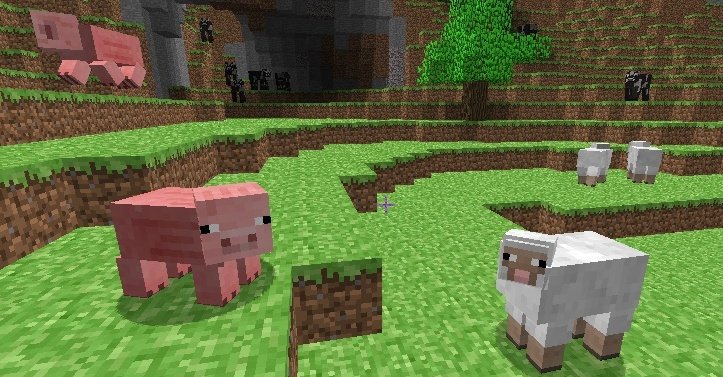
This week on the site, we want to celebrate some of the heroes of the PC gaming community. People who've devoted huge amounts of their free time to making something awesome for the rest of us to enjoy. Today we're talking to Markus 'Notch' Persson, creator of the awesome indie building game Minecraft - which, it turns out, most of Valve seem to be playing .
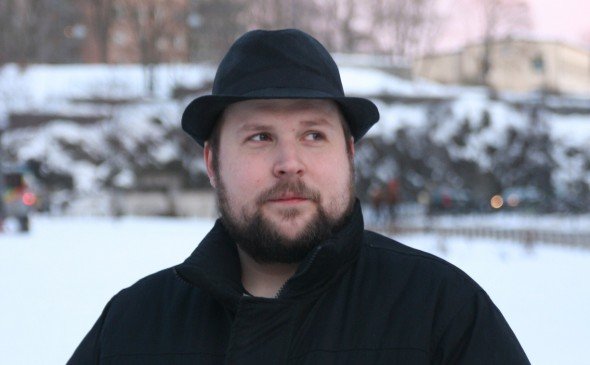
PC Gamer: When I first heard of Minecraft, it was still mainly a sandbox building game, with a handful of blocks and no multiplayer of any kind. How long have you known that you wanted Minecraft to be the kind of co-op wilderness survival game it's shaping up to be these days?
Notch: I knew what kind of game I wanted to do pretty much from day one, actually. When I started what would later evolve into Minecraft, the main inspiration was to do something that was a mixture of Dwart Fortress, Rollercoaster Tycoon and Dungeon Keeper, with a big emphasis on keeping the game accessible. I was toying around with a first person mode similar to the Possess spell in Dungeon Keeper when I saw Infiniminer, and that's when the game turned into the first person, hands on type of game it is today.
PC Gamer: You worked with Rolf Jansson on Wurm Online before you started work on Minecraft. Although wildly different, they both have some strong fundamental similarities - the terrain grid, spiders being bastards, player-created strongholds - who rubbed off on who?
Notch: Originally, Rolf wanted to make a Western MMO with people finding their own destinies and really being in control of the economics and politics in the game. I wanted to do something a fully modifiable fantasy world with huge forests. We decided that a gritty down-to-earth type of fantasy game with real consequences and player driven politics would be a great compromise. Over time, I got more responsible for the representation and technology of the game, while he took charge of the economy part. As for the spiders.. I suffer from mild arachnophobia and remember the giant spiders in Eye of the Beholder as being one of the scariest enemies in a role playing game. I'm not sure why I keep exposing myself to them as enemies in my games..
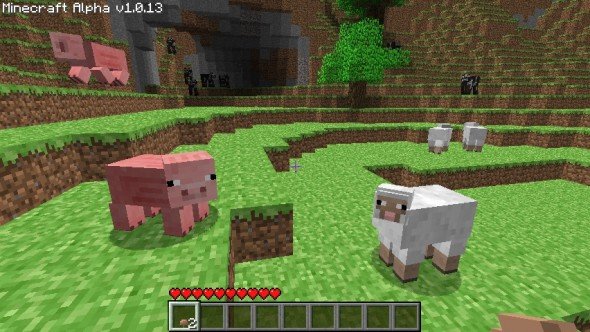
PC Gamer: When did you first realise you could make Minecraft as your day job? What did that feel like?
Notch: Just a couple of months after opening up alpha sales, I realized that people really liked the game, and that it really had potential to become something big, so I dropped down to working 40% part time. Thankfully, the people who run the place I worked at (Jalbum.net) come from a background of driving small hobby projects into proper companies, so they were very understanding. It took me another six months to finally dare taking the leap and going proper full time. I gave three months notice, and by the time I left, it already was quite obvious I had made the right decision, with Minecraft sales steadily climbing up.
Keep up to date with the most important stories and the best deals, as picked by the PC Gamer team.
PC Gamer: Being a one man development team, you're filling a lot of roles that a large studio would parcel off to specialists. Is there anything you don't like doing, or any part of the process you look forward to?
Notch: I really used to hate doing art, but after years of doing it all on my own, I've actually started to enjoy it. Once you get to know it, doing pixel graphics really is less of a magic artform than you'd think. With patience and a critical eye you can get decent results even if you have no artistic talent, like me. Another side I keep procrastinating or straight out ignoring is all the business type work, like setting up a proper limited corporation, getting started on doing Creeper Plushies, or getting in contact with potential distribution partners.
PC Gamer: Multiplayer Survival is probably the aspect of Minecraft that excites me most. What was your most fun experience of the recent private testing? Did anything let you down, aside from bugs?
Notch: The second time I ran the test, the password for the server got leaked and ended up on 4chan, meaning the server started getting flooded with connection requests, so I gave in and published the password on my twitter. As a result the server got over three connection attempts per second for almost seven hours straight. The most surprising and awesome part was that the server actually HELD. It was disappointing to see the password leak so fast, but then again, the internet is the internet, and it really was inevitable. Besides, I got some great testing out of it.
The most fun I had with the actual tests was when I ran the server in debug mode so I could replace code while it was still running, meaning I could cause all sorts of havoc. I made one player turn water into ice and put snow on all blocks near him, another player turn snow into fire, and a third one turn fire into TNT. TNT and fire meant explosions.
It was also fun to make random players spawn slime ball items constantly, mainly because the drop animation made it look like they were constantly throwing up green slime.
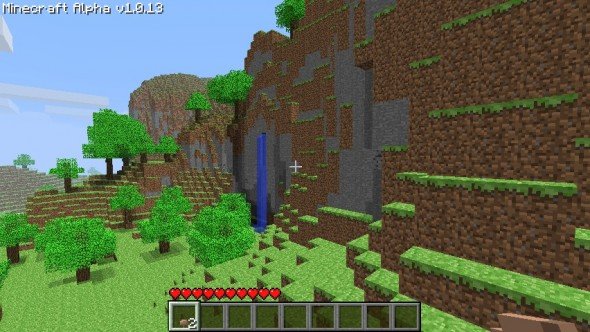
PC Gamer: Of all the elements at play in Minecraft, the way that water and lava works seems to have gone through the most radical changes. How would you like them to behave ideally, and what sorts of things prevent you from making that happen?
Notch: Ideally, they'd behave more like their real life counter-parts. I used to have a model which would search through the level for the highest connected water block and drain water from there when water flowed, but I had to stop using that. Not only was it very slow, it also was incompatible with the infinite level rewrite where only a limited area of the map is loaded into memory at any given time. The current model is a purely local one with blocks only knowing about their immediate surroundings, meaning it's much faster and compatible with the memory model.
It does produce weird results sometimes, but I've decided to stop working on water until the rest of the game is in place.
PC Gamer: Do you know in advance what you're doing for the Friday updates? How long does it usually take the community to discover everything you've slipped in there?
Notch: The Friday updates serve two purposes. For one, they let me let off some steam and just do what I think is the most fun with game development; adding radical new features. And secondly, they work great as a regular weekly thing to keep the game feeling fresh. Since I use them as a way to just goof around a bit, I try not to overthink them in advance, and usually decide what to do on the Thursday just before getting started working on it.
It doesn't stay a secret for long, though. People look in the game binaries and compare files with the previous version, if there's new item art, there probably is a new item. Secrets generally only last for like twenty minutes before I see them posted in the comments on my blog. It's pretty entertaining.
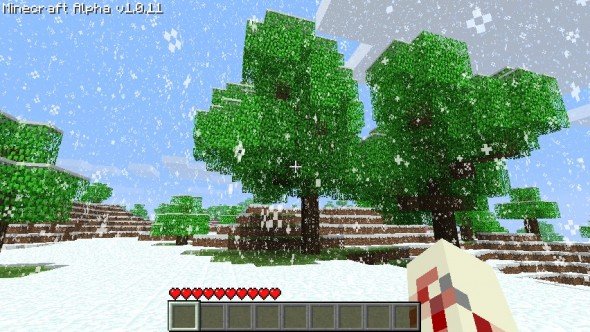
PC Gamer: You've said that Minecraft will be done when you've finished up Survival mode, and that you'll expand it with a more traps-themed content release afterwards. Is that still the plan? What's next for Minecraft, after that?
Notch: When Minecraft has working survival mode multiplayer, it will have all the features I originally wanted, so I will declare that to be the finished version. Then I will keep working on the game for as long as people play and buy it, adding large and small features and releasing them as free updates to the game. I have many more games I want to do, but there's so much potential in Minecraft that I can see myself working on it for a long time.
Once the game stops selling and I've moved on to something else, I will release most of the game as open source (excluding the parts I am not the original author, such as the sounds), so that other people can keep expanding the game.
PC Gamer: Will Minecraft go up to full price when you're done with Multiplayer Survival then? Are you going to make a big thing of the release?
Notch: When the game hits beta, the price will go up to 14.95 euro, with the final price being 19.95 euro once beta is over. I have NO idea how long beta will be, as it really depends on how much polish there is to do. Hopefully less than I'd fear.
Beta is coming this summer some time, not too long after SMP testing is out. I want to make a big deal out of going beta, then again when going to full release, but I'm not quite sure exactly what to do. I'd love for you guys to mention it. :D
PC Gamer: There are tons of things you could add to Minecraft, and certainly an avalanche of requests from the community (pulping wood to make papyrus and grinding flowers to make ink was one of my favourite examples). Do you have a self-imposed limit on the sheer volume of crafting recipes and interlocking mechanisms you'll put in the game, for accessibility's sake?
Notch: There are a few technical limitations, such as there being a maximum of 256 different block types (about 70 are in use at the moment), and 36000 different items. From a game design level, I try to focus on adding things that add a new dimension to the game rather than to just add several similar versions of the same thing. I do think it would be great to have more farming options, or different types of arrows, but generally I try to go with the more radical stuff. The idea is that if I add enough things that can interact in unexpected ways, they will. I guess I'm aiming for emergent gameplay.
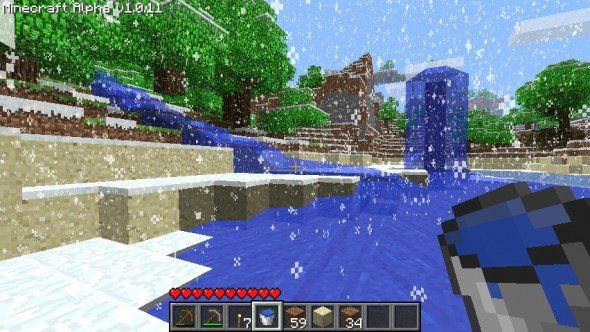
PC Gamer: How has the PC platform affected your success with Minecraft? What would alternate-universe-Markus have had to do to make a living with Minecraft for consoles?
Notch: PC has the great benefit of having a fully unrestricted access to the internet, with the ability for anyone to install anything they choose, making it very easy to get people to try what you have made. You can play Minecraft directly in your web browser within minutes of hearing about it, which is something that's very hard to do on consoles. Console manufacturers are starting to open up to community content, but it really is quite limited, and probably will remain so out of fear of piracy. To get your game featured, it needs to be a finished game, and you need to know the right people and how to market yourself, meaning there's a MUCH larger initial cost than when doing a PC game which you can get out to the market within weeks with absolutely no budget. If the PC game flops, you can respond to feedback and move on, or you can scrap it and start on something else. If the console game flops, you've lots heaps of money and probably upset a couple of suits in the process.
Minecraft would never had stood a chance if I designed it for consoles from the start. I would've had to find a publisher or investor who was willing to invest in a frankly rather strange game idea, then I would've had to either get it out in stores and compete with 60 euro titles, or have it be featured as a mini game on XBLA or PSN. I don't think that's very likely.
That said, it would be very interesting to port the game to a few consoles (perhaps the Pandora?) later on. I know doing a very limited Android version wouldn't be impossible at all.
Notch, put in a mace that you can hold to charge up and let go to swing, and have it so you can put dynamite on the end, and... hello?

